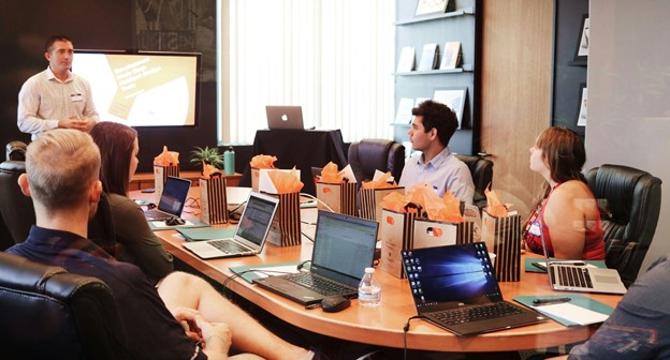TheStartupMag
1w
423

Image Credit: TheStartupMag
The Best Tools for Engaging and Effective Office Presentations
- Creating an engaging and effective office presentation is no small feat. Top tools that make office presentations not only more engaging but also easier to follow and remember. Setting up the right atmosphere can help your audience tune in and stay receptive throughout your talk. A successful presentation starts well before the first slide goes up; it begins with creating an environment conducive to focus and engagement. The power of visuals in a presentation can’t be overstated. Using the right design and interactivity tools can transform slides into memorable and effective visuals that keep your audience interested and involved. Clear and impactful audio is just as crucial as visual elements in a successful presentation. By using feedback and analytics tools, you can measure engagement levels, understand audience preferences, and continually improve your delivery. Implementing these strategies can make all the difference in your professional presentations, helping you convey your message clearly and confidently.
- Lighting and Room Setup: Balanced lighting that allows slides to be visible while keeping the room well-lit. Small, portable ring lights or adjustable overhead lighting options can help manage the environment effectively. Accessories like a remote clicker or adjustable stands can come in handy.
- Visual Tools: Projectors, screens, and large display monitors are effective visual tools. Simplify your slides with a few impactful images and limit text so your audience can focus on your message. Programs like PowerPoint, Keynote, and Canva provide intuitive templates, making it easy to design professional-looking presentations.
- Software for Slide Design and Interactivity: Canva offers a wide range of slide templates and graphics, giving users a creative edge with minimal effort. Software such as Mentimeter or Poll Everywhere allows you to add live polls, quizzes, and Q&As directly into your presentation.
- Microphones for Voice Clarity: Investing in a good-quality microphone, such as a lavalier or lapel mic, can make a world of difference. Portable Bluetooth speakers or more advanced PA systems can help project your voice across the room. Using noise-canceling devices can isolate your voice, minimizing background distractions for the audience.
- Tools for Audience Feedback and Analysis: Interactive tools like Mentimeter and Slido offer real-time audience feedback features. Survey tools like Google Forms and SurveyMonkey make it easy to collect feedback after the presentation. Platforms like Zoom and Microsoft Teams provide analytics on audience engagement to help you tailor future presentations.
- Ensure the seating is arranged so that everyone has a clear view of the presentation. Limit visual clutter and use color-coding and icons to simplify complex information. Animation and transitions, when used sparingly, can also add an extra layer of polish to key points in your presentation.
- Ensure the speakers are positioned optimally to avoid feedback and provide balanced sound throughout the room. Using noise-canceling technology can isolate your voice, minimizing background distractions for the audience.
- These insights can be instrumental in understanding which areas to improve upon and which elements resonated most with the audience. Reviewing these metrics helps you tailor future presentations to maximize engagement and keep the audience captivated throughout.
- With the right setup and resources, your next presentation could be the one that leaves a lasting impression. Creating an engaging and effective office presentation is more than just crafting slides—it’s about enhancing the overall experience with the right tools and techniques.
Read Full Article
25 Likes
For uninterrupted reading, download the app